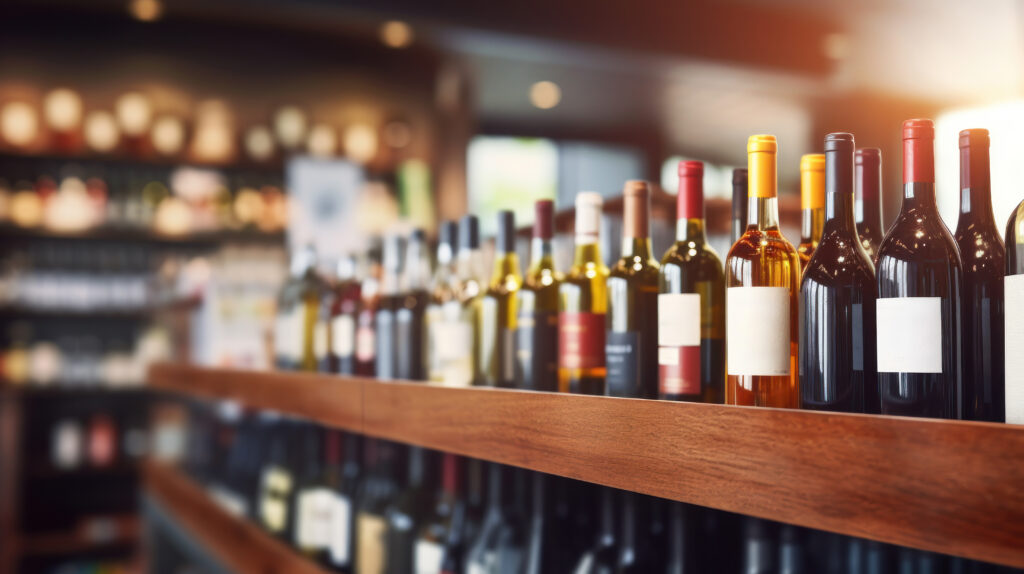Business Planning & Strategy, Financial Models
Liquor Store Business: Costs, Revenue Potential & Profitability
A liquor store operates in a regulated, high-volume consumer segment where profitability depends on category margin optimization, inventory velocity, and operational efficiency. While gross margins vary by product line, strong cash flow and repeat traffic make this model attractive. Success is driven by assortment discipline, vendor leverage, and tight cost control, especially in licensing-heavy jurisdictions.
Asset Configuration
CapEx is moderate, with investment focused on shelving, cold storage, and security infrastructure. A typical store spans 800 to 2,500 sq. ft., with additional storage depending on volume and delivery activity.
| Asset Category | Cost Range (USD) | Notes |
|---|---|---|
| Shelving, Racks, Display Coolers | 30,000 to 60,000 | Wall shelving, gondolas, branded chillers |
| POS, Inventory, and ID Verification | 5,000 to 10,000 | Age-gating systems, CRM, promotions |
| Security and Surveillance Equipment | 10,000 to 20,000 | Cameras, anti-theft, shatterproof glass |
| Branding, Finishes, Signage | 10,000 to 20,000 | Window displays, lighting, visual merchandising |
| Opening Inventory | 150,000 to 300,000 | Spirits, wine, beer, RTDs, accessories |
Total CapEx: 205,000 to 410,000 USD, primarily driven by inventory and fixtures. State licenses and permits vary but may add 5,000 to 20,000 USD upfront.
Revenue Model
Revenue is transaction-based, with average basket sizes ranging from 25 to 60 USD, depending on market and assortment. Key margin drivers include private labels, limited releases, and value-added packaging (e.g., gift boxes, samplers). Repeat footfall is high, particularly for beer and wine buyers.
Annual Revenue Potential for a 1,500 sq. ft. Neighborhood Liquor Store
| Revenue Stream | Volume Assumption | Annual Revenue (USD) |
|---|---|---|
| Spirits (whiskey, vodka, rum, etc.) | 25,000 transactions at 40 USD avg. | 1,000,000 |
| Wine | 15,000 transactions at 30 USD avg. | 450,000 |
| Beer and RTDs | 20,000 transactions at 25 USD avg. | 500,000 |
| Accessories, Mixers, Gift Packs | 1,000 per week avg. | 52,000 |
| Online Orders and Local Delivery | 1,200 per week avg. | 62,400 |
| Total | 2,064,400 |
Urban stores with high foot traffic and product rotation can exceed 3.5 million USD annually. Low-throughput suburban outlets without delivery support often remain below 1.2 million USD.
Operating Costs
COGS varies by category: beer is low-margin, spirits are higher, and accessories carry the best markup. Labor is lean, but security, shrinkage, and compliance monitoring are critical. Inventory must be tightly controlled to avoid tying up cash in low-velocity SKUs.
| Cost Category | Annual Cost Range (USD) |
|---|---|
| Cost of Goods Sold | 1,150,000 to 1,250,000 |
| Staff Wages and Payroll | 180,000 to 220,000 |
| Rent, Utilities, Insurance | 160,000 to 200,000 |
| Marketing, Loyalty, Community Outreach | 60,000 to 80,000 |
| Security, Licenses, Compliance | 45,000 to 65,000 |
| Shrinkage, Spills, Expiry Write-offs | 25,000 to 40,000 |
| POS, CRM, Admin, Tech | 20,000 to 30,000 |
| Total Operating Costs | 1,640,000 to 1,885,000 |
EBITDA = 2,064,400 – 1,640,000 to 1,885,000 = 179,400 to 424,400 USD
EBITDA Margin = 8.7% to 20.6%
Well-run stores with strong private-label mix, tight cost control, and delivery can consistently maintain margins around 15 to 20 percent. Under-optimized stores with poor inventory turns or compliance inefficiencies risk falling into single-digit territory.
Profitability Strategies
Profitability in liquor retail depends on category margin stacking, throughput velocity, and licensing discipline.
Start with assortment tiering. Use high-velocity brands (e.g., Tito’s, Jameson, La Marca) to anchor traffic, then upsell to premium or private-label alternatives with margins 20 to 30 percent higher. Limit SKU bloat, especially in wine and RTDs, and prioritize items with 60-day turnover or better.
Maximize per-basket profitability through product placement and impulse strategy. Promote bundles (e.g., tequila plus mixers), feature top-margin items at eye level, and use floor displays for seasonal rotations. Target accessory attach rates of 20 percent or higher.
Protect full-price margins by avoiding deep promotions. Instead, offer exclusive tastings, loyalty points, or small-batch preorders. Leverage vendor co-op funding for campaigns and push delivery as a margin-neutral upsell.
Invest in age verification, compliance tools, and digital licensing protocols to avoid violations and fines. These are non-negotiable in alcohol retail and should be budgeted proactively.
Finally, monitor shrinkage and breakage monthly. Implement loss prevention training and product rotation for dated inventory. Establish reorder points and sell-through minimums to maintain inventory agility.
So what?
A liquor store is not a commodity outlet – it is a margin-tiered, compliance-driven inventory machine. Profitability depends on how well the operator controls assortment, rotates product, and layers value through bundling and convenience. Retailers who execute tight category strategy, defend premium pricing, and optimize Q4 and weekend peaks can sustain 9 to 20 percent EBITDA margins on over 2 million USD in revenue, with CapEx under 410,000 USD.

Are you considering opening your Liquor Store business? Download the comprehensive Liquor Store Business Financial Model Template from SHEETS.MARKET to simplify your financial planning. This tool will help you forecast costs, revenue, and potential profits, making securing funding and planning for success for your Liquor Store business easier.



